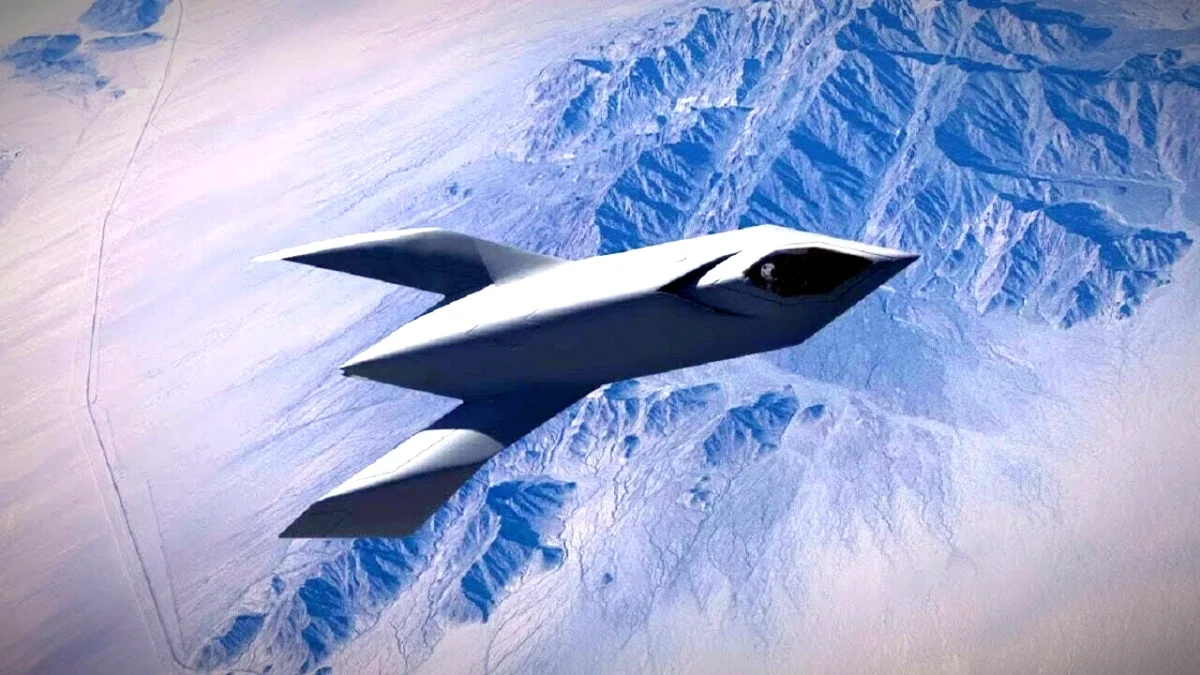YF-118G: Meet the Bird of Prey – The Aircraft That Star Trek Helped Inspire – Until Star Trek debuted on NBC on September 8, 1966 – eventually becoming a touchstone of international pop culture – spaceships were almost always depicted as “flying saucers” or “rocket ships.” The USS Enterprise (NCC-1701) was unlike anything else seen in science fiction, and more importantly, it was actually a starship.

While no manmade craft has actually come anywhere close in design to what is arguably the most famous sci-fi space vessel (sorry Millennium Falcon fans), another craft from Star Trek seems to have been at least “inspired” from the series.
That would be the Boeing YF-118G, a black project aircraft that was developed to demonstrate stealth technology.
Created by McDonnell Douglas and Boeing in the 1990s, it was soon dubbed “The Bird of Prey,” due to its passing resemblance to the fictional Klingon spacecraft that was first seen in the film Star Trek III: The Search for Spock, and which later made appearances in TV’s Star Trek: The Next Generation.

Klingon or Romulan?
A point of contention among some is whether the fictional Bird of Prey was in fact Klingon in origin, as some fans have pointed out that the craft was actually Romulan.
Fact: It is both.

The “original” Bird of Prey was a Romulan warship that made its first appearance in the first season episode “Balance of Terror,” and was seen again via recycled footage in the second season episode “The Deadly Years.” However, by the third (and final) season of Star Trek (The Original Series), the Romulans were seen using Klingon D7 cruisers.
Rumors continue as to why, and the likely answers are that prop designer Wah Ming Chang worked from home due to union restrictions and the original Bird of Prey model disappeared after the initial filming.
The other half of the story is that the switch was made as a courtesy to Aluminum Model Toys, which produced the D7 model.

The name Bird of Prey was later used to identify the Klingon warship that was first seen in Star Trek III: The Search for Spock, and which was the ship Captain James T. Kirk and company used to transport whales to the 23rd century in Star Trek IV: The Voyage Home.
The exact size of that ship has bewildered fans for decades – as it appears to be a small craft that can be hidden in San Francisco’s Golden Gate Park, yet is still large enough to carry two full-sized whales in its cargo bays.
The U.S. Air Force’s Bird of Prey

The FY-118G isn’t large enough to carry whales of course, and as far as we know it had no time travel capabilities (maybe the Air Force had a DeLorean for that). This Bird of Prey was developed as a single-seat aircraft as part of a secret project that ran from 1992 to 1999.
During that time, the FY-118G was a demonstrator used to test “low observable” stealth techniques as well as new methods of aircraft design and construction. The aircraft made its first flight in 1996, and during the subsequent thirty-seven missions to follow, it was used to determine ways to make aircraft less observable not only to radar but also to the naked eye.
The program helped validate new ways to design and build aircraft using large single-piece composite structures, as well as “virtual reality” (VR) computerized design and assembly, and disposable tooling.

The actual resemblance to the Bird of Prey requires a bit of imagination, but it is clear that whoever came up with the moniker was thinking more of the Klingon version rather than the Romulan craft (sorry Chang – another credit you can’t claim).
YF-118G: Off The Shelf Components
Where the FY-118G may share some similarities with the Romulan Bird of Prey is that each utilized off-the-shelf components. Chang had apparently used the “kit bashing” technique of using existing model kits to create many of the props for the original Star Trek including the Romulan warship.

McDonnell Douglas and Boeing used a similar technique as it employed readily available aircraft components, and relied on existing technology to reduce costs and to speed production. That apparently included the use of a control system that was all-manual with no computer assists, while the Bird of Prey’s landing gear was actually adapted from Beech King Air and Queen Air aircraft.
The YF-118G was powered by a single Pratt & Whitney JT15D-5C turbofan that provided 3,190 pounds of thrust and had a maximum speed of 300 miles per hour, and a ceiling of 20,000 feet. The aircraft made its final flight in 1999, while it was then declassified three years later when its design techniques had become standard practice.
Boeing has used those techniques in the development of X-32 Joint Strike Fighter demonstrators and later in its X-45A Unmanned Combat Air Vehicle prototype. The lasting legacy of the Bird of Prey was its ability to demonstrate advances in stealth concepts, notably the “gapless” control surfaces that were developed to blend smoothly into the wings to reduce radar visibility, while the engine intake was completely shielded from the front.

You Can see the YF-118G
Following the completion of the tests, Boeing donated the sole YF-118G Bird of Prey to the National Museum of the United States Air Force in 2002, where it has been on display since 2003 – and where despite its stealthy technology is ready to be seen and photographed by visitors. Likely more than a few are quick to see the Star Trek connection.





